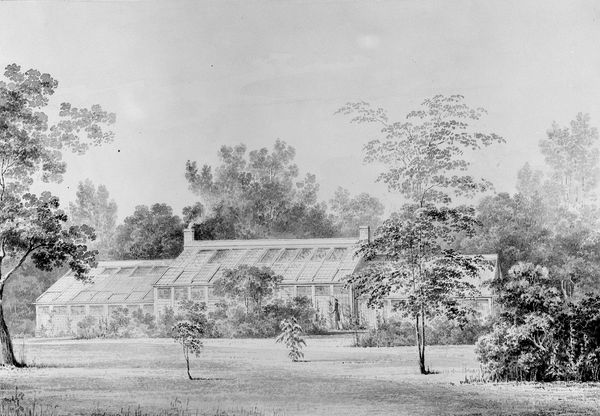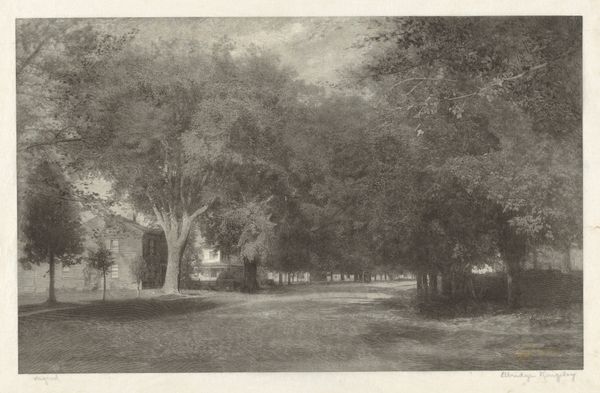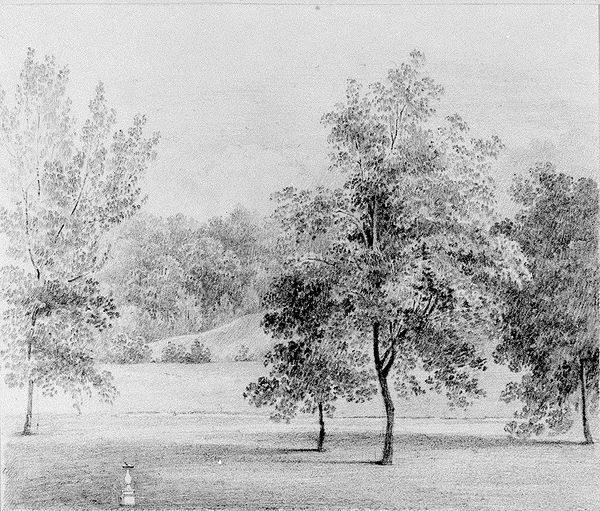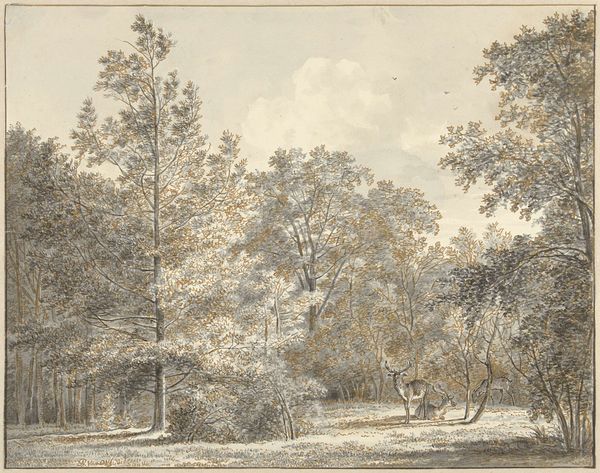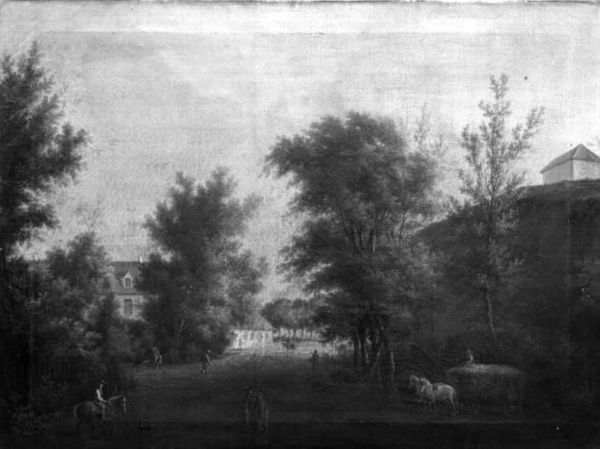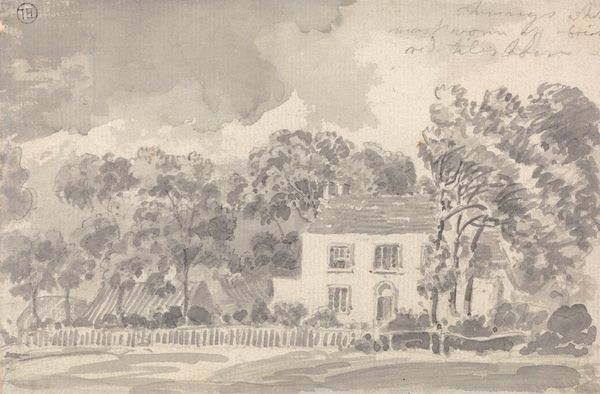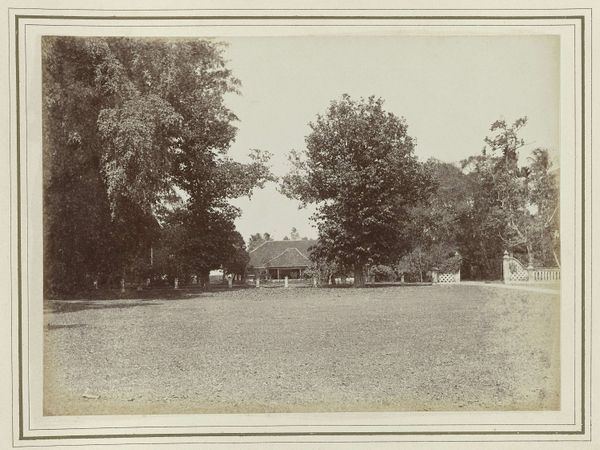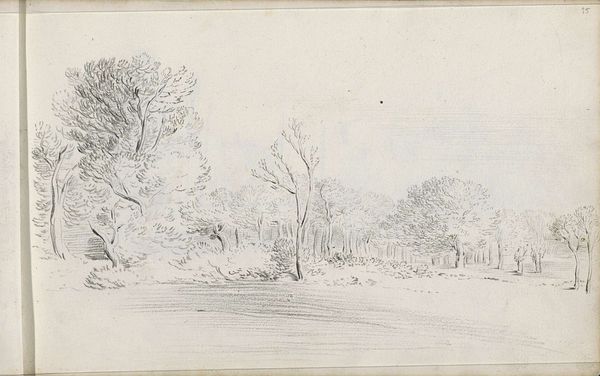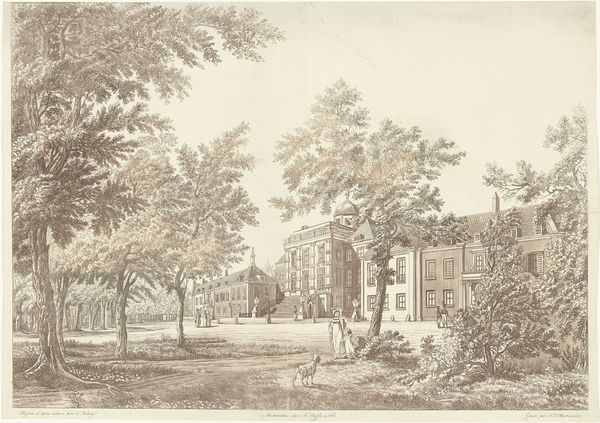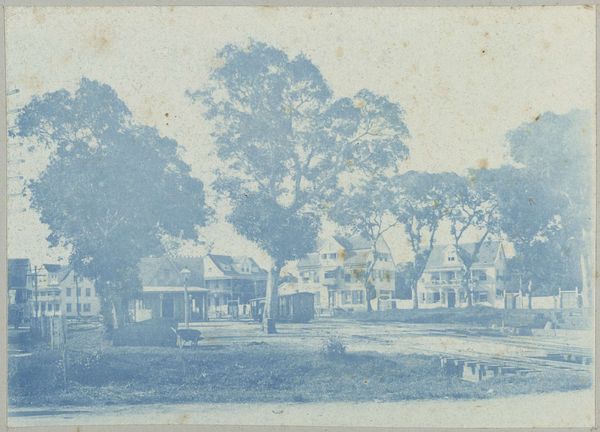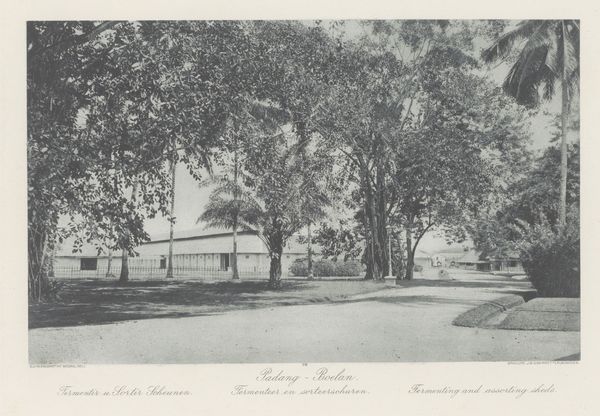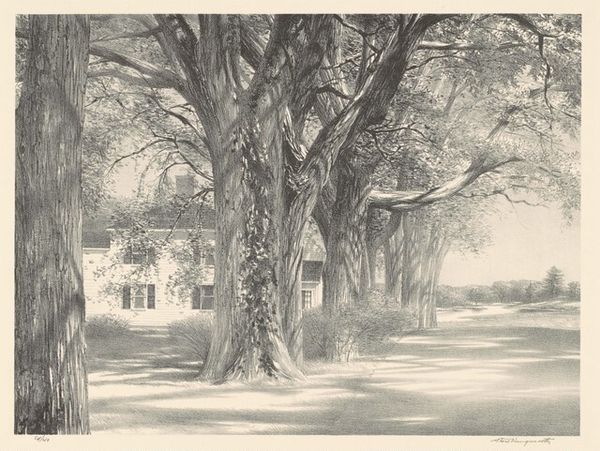
View of the David Hosack Estate, Hyde Park, New York, from the South (from Hosack Album) 1829 - 1832
0:00
0:00
drawing, plein-air, pencil
#
tree
#
drawing
#
countryside
#
plein-air
#
landscape
#
landscape
#
house
#
nature
#
outdoor scenery
#
landscape photography
#
figure in landscape
#
romanticism
#
pencil
#
hudson-river-school
#
park
#
cityscape
Dimensions: 5 1/8 x 7 7/16 in. (13 x 18.9 cm)
Copyright: Public Domain
Curator: This is a pencil drawing from around 1829 to 1832 by Thomas Kelah Wharton, titled "View of the David Hosack Estate, Hyde Park, New York, from the South". Editor: My first impression is a sense of quiet, almost melancholy. The limited tonal range, the somewhat sparse drawing style – it evokes a feeling of vast space but also a kind of emptiness. Curator: That sparseness speaks volumes. Hosack's estate, with its progressive botanical garden, was intended to be a national resource, a contribution to American science and agriculture. Wharton’s rendering underscores this ambition; it's a landscape being fashioned, almost literally, on a grand scale. Editor: Indeed, it feels less about nature's bounty and more about labor applied to the land. Looking at those lightly sketched fields, I see the physicality of the work – the clearing, planting, shaping. Pencil, especially, makes me think about mark-making, about manual effort and time. Curator: Absolutely. And consider the choice of vantage point – from the south, subtly elevating Hosack’s house. The house is rendered as both a gentleman’s dwelling, but equally as a nexus of intellectual activity. It visually argues for the value of scientific inquiry within the broader political landscape. Editor: And it is hard to overlook how romanticized it all looks, how idealized, too. The drawing flattens out so much of the land while those few foreground trees are very present, really showcasing how different a drawing made en plein-air is to something created under controlled studio conditions. You get such an interesting feel of naturalism mixed with artifice when you observe them, they frame the open view that the eye moves toward. Curator: I agree; this interplay of romanticism with scientific intention really underlines the cultural currents of the time. Wharton isn't simply capturing a likeness; he's participating in the cultural project of defining the American landscape and, by extension, American identity. Editor: For me, the material modesty of a simple pencil drawing paired with such grand ambition makes this work quite potent. You begin to consider all of those contradictions – refinement and labor, cultivation and wilderness, and really start to examine all those themes together through the lens of landscape drawing. Curator: That tension is what keeps me coming back. It reveals the ongoing negotiation between humankind and the environment that still resonates deeply within social dialogue. Editor: Right, and a view such as this offers so much insight into those complicated dynamics between land and its impact on cultural value and expression.
Comments
No comments
Be the first to comment and join the conversation on the ultimate creative platform.
